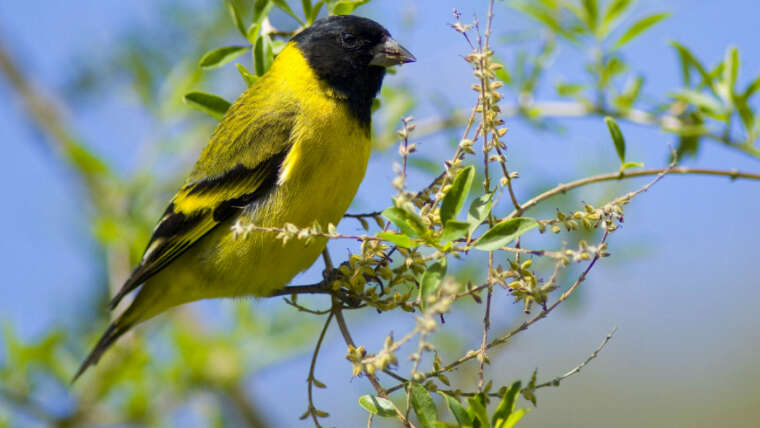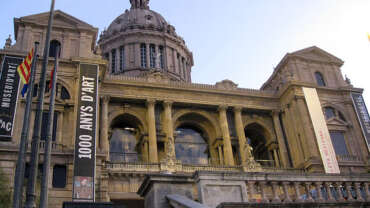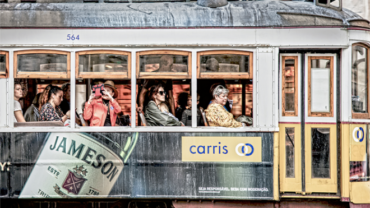Enjoy Uruguay all year!
History of Uruguay
Early period
Before the arrival of Europeans, the territory that is now Uruguay supported a small population estimated at no more than 5,000 to 10,000. The principal groups were the seminomadic Charrúa, Chaná (Chanáes), and Guaraní Indians. The Guaraní, who were concentrated in the subtropical forests of eastern Paraguay, established some settlements in northern Uruguay. The Charrúa moved to the shore in summer to fish and gather clams, fruits, and roots and moved inland in winter to hunt deer, rheas, and smaller game with bolas (stones connected by short ropes that are thrown to ensnare prey) and bows and arrows. Bands of eight to 12 families under a chief lived in villages of five to six houses made of matted windscreens. The Charrúa were known for their ferocity in battle, which they exploited to expand hunting grounds and capture women and children from other villages.
The first European to explore Uruguay was the Spanish navigator Juan Díaz de Solís in 1516, who, along with several of his men, was killed and eaten by Charrúa or Guaraní warriors. Ferdinand Magellan anchored at the future site of Montevideo in 1520, and Sebastian Cabot led a Spanish expedition up the Río de la Plata in 1526, but they found the Banda Oriental del Río Uruguay (“East Bank of the Uruguay River”) unattractive for settlement because of a lack of mineral wealth and the absence of Indians who could be readily enslaved or compelled to serve European interests. Jesuit and Franciscan missions were not established in Uruguay until the 1620s. By that time, however, the indigenous population had begun to collapse, as European diseases killed thousands.
Cattle from neighbouring regions, allowed to roam freely in Uruguayan territory, multiplied over the years until their numbers reached the millions. This process is said to have originated in 1603, when a governor of Paraguay, Hernando Arias de Saavedra, shipped a number of cattle and horses downstream from Asunción and the animals were landed on the Uruguayan riverbank. They were subsequently hunted for their hides by transient gauchos of mestizo ancestry. Groups of bandeirantes (explorers and slave hunters) from Portuguese Brazil also made incursions into the region and occasionally attacked the missions there. In 1680 the Portuguese established Colônia do Sacramento (Spanish: Colonia del Sacramento) on the Río de la Plata opposite Buenos Aires. There they carried on a contraband trade with Spanish settlers, who were collecting great quantities of silver from the mines of Upper Peru (now Bolivia). Spanish authorities countered this move by founding San Felipe de Montevideo as a fortified city in 1726 and attacking Colonia, which subsequently changed hands several times before being ceded to Spain in 1777. Montevideo became the major Spanish port of the South Atlantic, and the process of dividing the Banda Oriental into huge unfenced ranches began. In 1776 the Banda Oriental became part of the Viceroyalty of the Río de la Plata, the capital of which was Buenos Aires; however, Montevideo was still allowed to send shipments directly to Spain rather than clearing them first at Buenos Aires.
By 1800 there were approximately 10,000 people in Montevideo and another 20,000 elsewhere in Uruguay. About one-third of the total were African slaves, most of whom worked on estancias (ranches), in saladeros (meat-salting operations), and in households. Uruguay’s small but growing middle class included petty merchants, artisans, and military officers of mestizo and European ancestry. At the apex of society were wealthy traders, bankers, estancieros (ranch owners), and high-ranking government officials. Most of the elite originated from—or principally resided in—Catalonia, the Basque Country, the Canary Islands, and other Spanish European lands. Few Indian groups survived into the 19th century; the last large-scale massacre of Indian peoples occurred at Salsipuedes in 1831, and by mid century scant vestiges of indigenous culture remained.
The struggle for national identity
Montevideo, with its Spanish military and naval contingents, was a royalist stronghold when a movement for independence broke out in Buenos Aires in 1810. In the interior of the Banda Oriental, the fight against Spain was led from 1811 by José Gervasio Artigas, commander of the Blandengues, a mounted corps that the Spaniards had originally created to police the region. Artigas’s small army, which soon included a battalion of freed African slaves, was supported by rural inhabitants, antiroyalist Montevideo leaders, and an army from Buenos Aires. Following victories in the interior and in Montevideo, Artigas promoted a loose confederation of provinces of la Plata, but he also considered forming a rival confederation centring on Montevideo. These plans, coupled with Artigas’s growing power and egalitarian policies (including redistributing estanciero land to freed slaves and other poor Uruguayans), made him a threat to elites in Uruguay and centralists in Buenos Aires, who acquiesced when Portuguese Brazilian forces took over the Banda Oriental in 1820, and Artigas was driven into exile.
“Brazilianization” was resisted within the Banda Oriental and by Uruguayan exiles as well. Argentines felt increasingly threatened by the Brazilian presence, and their government was compelled to support Juan Antonio Lavalleja, one of Artigas’s exiled officers, and his “33 orientales” when they crossed the river to free their homeland in 1825. The ensuing war was a stalemate, but British diplomats mediated a settlement in 1827, and in 1828 a treaty was ratified creating Uruguay as a separate state and a buffer between Brazil and Argentina; the nation’s strategic location also served British interests by guaranteeing that the Río de la Plata would remain an international waterway. On July 18, 1830, when the constitution for the Oriental State of Uruguay was approved, the country had scarcely 74,000 inhabitants.
Uruguay’s first years of independence were disastrous. Twenty years of war and depredation had greatly reduced cattle numbers, and the lands and fortunes of many colonial families had been destroyed. Both Argentina and Brazil still coveted Uruguay. The factions of the first and second presidents, José Fructuoso Rivera and Manuel Oribe, battled each other in what became known as the Guerra Grande (“Great War”). Oribe’s adherents, who displayed white colours, became the Blanco (“White”) Party and controlled the interior. Rivera and his followers used red colours and became the Colorado (“Red”) Party, based in Montevideo. The Blancos, supported by armies of the Argentine dictator Juan Manuel de Rosas, besieged Montevideo during the period 1843–51. The Colorados were aided first by France and England, then by Brazil. When in 1851 the Guerra Grande ended without a clear victory for either side, the Uruguayan interior was devastated, the government was bankrupt, and the disappearance of an independent Uruguay had become a real possibility. Intellectuals wanted to abolish the political parties that had brought the country to such a low point, but the war had made too deep an impact on ordinary Uruguayans, who had become polarized into Colorados or Blancos. In 1865 the Colorados, aided by a Brazilian army, ousted the Blancos from power; however, the Paraguayan dictator, seeing that action as a threat to the regional balance of power, sparked the War of the Triple Alliance (1864/65–70), in which Brazil, Uruguay, and Argentina combined to defeat Paraguay. Uruguayan commerce was disrupted by the war, as well as by persistent political disputes, a civil war known as the Revolution of the Lances (1868–72), and Brazilian and Argentine involvement in Uruguayan affairs.
Modernization and reform
Development accelerated during the latter part of the 19th century as increasing numbers of immigrants established businesses and bought land. Partly through their efforts, sheep were introduced to graze together with cattle, ranches were fenced, and pedigreed bulls and rams were imported to improve livestock. Earnings from wool (which became the leading export in 1884), hides, and dried beef encouraged the British to invest in railroad building and also helped to modernize Montevideo—notably in its public utilities and transportation system—which thereby encouraged additional immigration. In 1876 the Uruguayan armed forces took over the government and, aided by improved communications, began to establish firmer control over the interior. However, public support for the regime eventually waned because of the brutality and corruption of some of its leaders, and a civilian Colorado government returned to power in 1890.
Blanco demands for a larger role in government escalated into the Revolution of 1897, led by Aparicio Saravia, which ended when the Colorado president, Juan Idiarte Borda, was killed by an assassin not associated with the Blancos. Although conflicts between Colorados and Blancos continued to impede economic development, by 1900 Uruguay’s population grew to one million—a 13-fold increase over the level of 1830. The Colorado leader José Batlle y Ordóñez was elected president in 1903. The following year the Blancos led a rural revolt, and eight bloody months of fighting ensued before Saravia was killed in battle and government forces emerged victorious. In 1905 the Colorados won the first largely transparent legislative election in 30 years, and domestic stability was finally attained.
Batlle, who had become a Colorado hero, took advantage of the nation’s stability and growing economic prosperity to institute major reforms, including increasing state intervention in economic matters. His administration helped expand cattle ranching, reduce the nation’s dependence on imports and foreign capital, improve workers’ conditions through far-reaching social reforms, and expand education. In addition Batlle abolished the death penalty, allowed women to initiate divorce proceedings, augmented the rights of children born out of wedlock, and reduced the political influence of the Roman Catholic Church—reflecting growing trends toward social liberalization and secularization in Uruguay.
Batlle had two terms (1903–07 and 1911–15) in which to initiate his policies, but, realizing that his program might be reversed by a future president or dictator, he promoted a constitutional reform to end the presidency and replace it with a plural executive, the colegiado. Batlle’s audacious plan split the Colorados and reinvigorated the Blanco opposition, and in 1916 the colegiado was defeated in the country’s first election by secret ballot. Batlle retained a significant amount of prestige and support, however, which allowed him to strike a compromise that partly rescued the colegiado; thus, in a constitution promulgated in 1918, executive responsibility was split between the president and a National Council of Administration.
A consensus government emerged with policies that were more cautious than innovative, except in social legislation. Higher living standards were supported by a ranching economy that had stopped growing, a dilemma hidden by the high export prices of the late 1920s.
People of Uruguay
Ethnic groups and languages
Uruguayans are of predominantly European origin, mostly descendants of 19th- and 20th-century immigrants from Spain and Italy and, to a much lesser degree, from France and Britain. Earlier settlers had migrated from Argentina and Paraguay. Few direct descendants of Uruguay’s indigenous peoples remain, and mestizos (of mixed European and Indian ancestry) account for less than one-tenth of the population. Blacks and persons of mixed Black and white ancestry make up an even smaller proportion of the total.
Spanish is spoken throughout Uruguay, although in Rivera and other borderland towns close to Brazil an admixture of Portuguese and Spanish can be heard, often in a slang called portuñol, from the words português and español.
Religion
Nearly half of the people are at least nominally Roman Catholic. About one-third of the population adhere to other Christian faiths or are nondenominational Christians. About one-sixth of Uruguayans are agnostics or atheists. Jews, mostly in Montevideo, make up a small minority, which is nevertheless one of the larger Jewish communities in South America.
Cultural Life of Uruguay
Uruguayan culture reflects some of the same characteristics found in neighbouring Argentina. Both countries are strongly European (notably Spanish and Italian) in their orientation, and, unlike many Latin American countries, Uruguay is minimally influenced by indigenous culture. The tradition of the gaucho (cowboy, usually a mestizo) has been an important element in the art and folklore of both countries. Uruguay’s theatre and music are broadly based in terms of support and participation.
Daily life and social customs
Beef is fundamental to Uruguayan cuisine, and the country is one of the world’s top consumers of red meat per capita. Barbecues (parrilladas) are ubiquitous. Popular foods include beef platters, steak sandwiches (chivitos), barbecued kidneys and sausages, and pastas. Locally produced soft drinks, beer, and wine are commonly served, as is clericó, a mixture of fruit juice and wine. Uruguay and Argentina share a national drink: maté (or yerba maté), a tea that is usually sipped from a gourd using a metal straw. Although some Uruguayan gauchos still dress in traditional trousers, ponchos, and wide-brimmed hats, most Uruguayans wear clothing styles that are also common to Europe and North America.
Uruguay’s main holidays are New Year’s Day (January 1), Epiphany (January 6), Labour Day (May 1), and Christmas (December 25). Among the major patriotic holidays are Constitution Day (July 18), Independence Day (August 25), and the commemoration (April 19) of the arrival in 1825 of anticolonial leader Juan Antonio Lavalleja and his band of 33 fighters.
The arts
José Enrique Rodó, a modernist, is considered Uruguay’s most significant literary figure. His book Ariel (1900), which stresses the importance of upholding spiritual over materialistic values, as well as resisting cultural dominance by Europe and the United States, continues to influence young writers. Outstanding among Latin American playwrights is Florencio Sánchez; his plays, written around the beginning of the 20th century and dealing with contemporary social problems, are still performed. From about the same period and somewhat later came the romantic poetry of Juan Zorrilla de San Martín, Juana de Ibarbourou, and Delmira Agustini and the short stories of Horacio Quiroga. The psychological stories of Juan Carlos Onetti have earned widespread critical praise, as have the writings of Mario Benedetti. Uruguay’s best-known contemporary writer is Eduardo H. Galeano, author of Las venas abiertas de América Latina (1971; The Open Veins of Latin America) and the trilogy Memoria del fuego (1982–87; Memory of Fire). Uruguayans of many classes and backgrounds enjoy reading historietas, comic books that often blend humour and fantasy with thinly veiled social criticism.
The folk and popular music of Uruguay shares with Argentina not only its gaucho roots but also the tango, a musical and dance style that originated in Argentina. One of the most famous tangos, “La cumparsita” (1917), was written by the Uruguayan composer Gerardo Matos Rodríguez. The candombe is a folk dance performed at Carnival mainly by Uruguayans of African ancestry. The guitar is the preferred musical instrument; and, in a popular contest called the payada, two singers, each with a guitar, take turns improvising verses to the same tune. Numerous radio stations and musical events reflect the popularity of rock music (mainly imported from the United States and Europe, though some Uruguayan bands enjoy wide followings) and Caribbean genres known as música tropical (“tropical music”). Early classical music in Uruguay showed heavy Spanish and Italian influence, but since the 20th century a number of composers of classical music, including Eduardo Fabini, Vicente Ascone, and Héctor Tosar, have made use of Latin American musical idioms.
The 19th-century painter Juan Manuel Blanes, whose works depict historical events, was the first Uruguayan artist to gain widespread recognition. The Post-Impressionist painter Pedro Figari achieved international renown for his pastel studies of subjects in Montevideo and the countryside. Blending elements of art and nature, the work of the landscape architect Leandro Silva Delgado has also earned international prominence.
Uruguay has a small but growing film industry, and movies such as Marcelo Bertalmío’s Los días con Ana (2000: “Days with Ana”) have earned international honours. New work is highlighted at the annual International Film Festival of Uruguay, held in Montevideo.
Cultural institutions
Montevideo, the cultural heart of the country, is home to Uruguay’s principal cultural institutions, including the National Library and the national museums of history, anthropology, natural history, and art. Several regional museums, such as the Museum of the Indian and Gaucho in Tacuarembó, have well-maintained historical collections. The government supports two symphony orchestras, the National Theatre, and schools of dramatic arts, fine arts, and ballet. Private dramatic and musical groups also perform in Montevideo and other cities.
Experience Uruguay

Whilst smaller in landmass and with fewer tourist drawcards than its South American neighbors, Uruguay’s accessibility, contrasting cities and a range of attractions set amongst a more relaxed atmosphere make it a worthy side trip for short or extended stays.
Situated just across the River Plate from Buenos Aires, tourists are drawn to the historically intriguing town of Colonia, the eclectic capital of Montevideo and the beautiful Atlantic beach resorts such as the exclusive Punta del Este.








